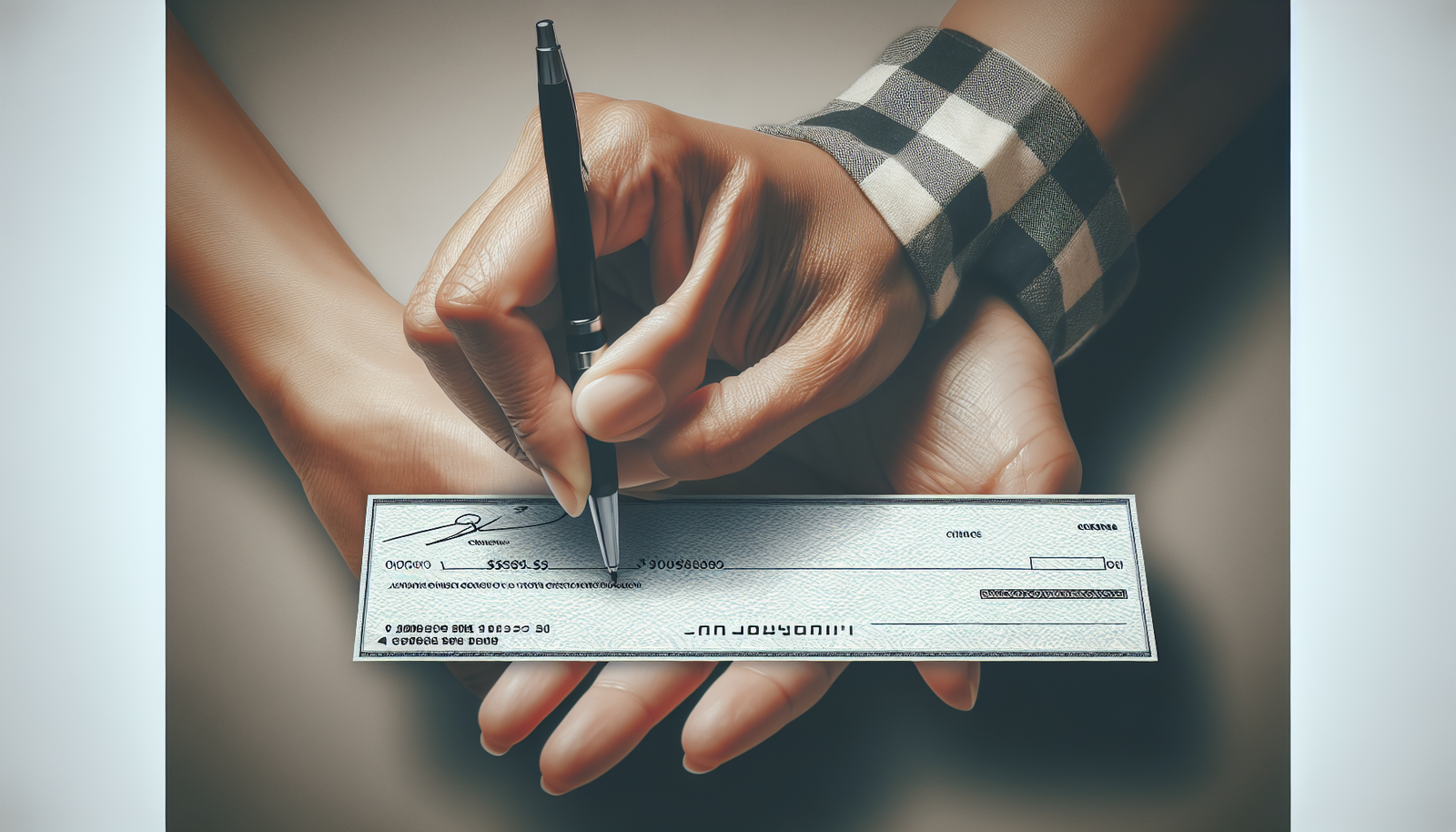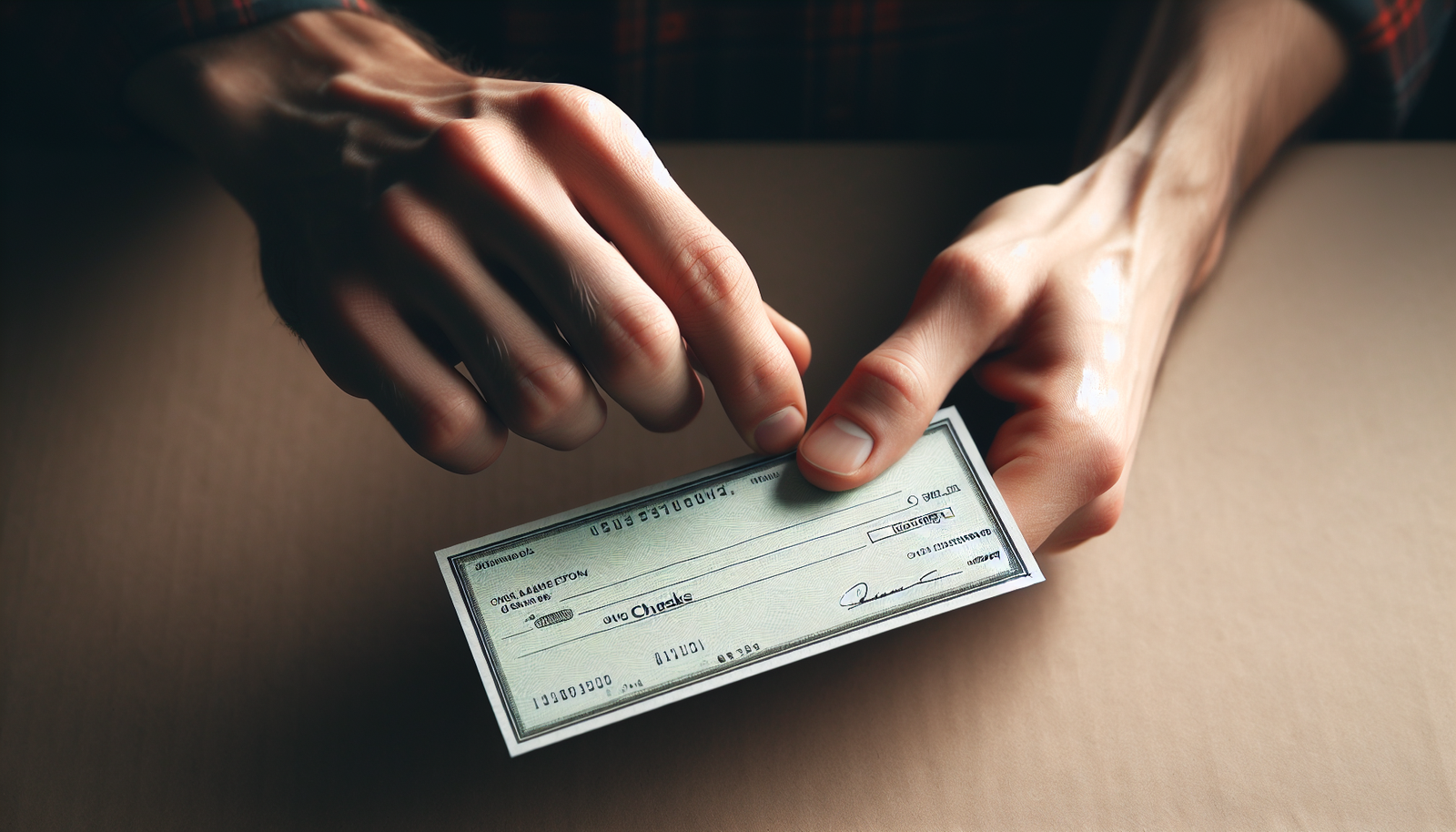
Imagine a world where managing your finances is as easy as pie. Where every dollar and cent are accountable, your hard-earned cash is secured, but also flexible in its spending power. That’s the world “check money” offers to you. A seamless online platform that keeps track of your finances, provides banking solutions, money saving tips and smart investment opportunities all at your fingertips. Prepare to revolutionize your financial experiences with “Check Money”.

Understanding the Nature of Check Money
In the vast landscape of financial transactions, check money stands as a testament to the traditional method of exchange. Its survival amongst newer, digital methods of payment symbolizes its utility in the financial sphere, rooted in age-old practices but revamping itself to keep up with modern times.
What is Check Money?
Check money is effectively a written instruction made by an individual (known as the drawer) to their bank to transfer a specific amount of money from their account to another individual or entity (known as the payee). In simple terms, when you write a check, you are instructing your bank to pay someone on your behalf.
Differences Between Check and Cash
While cash and check money both serve the same purpose—to facilitate transactions—their usage and handling diverge significantly. Cash is tangible, immediate, and failsafe, yet it can be cumbersome to handle, especially in large amounts. Checks, on the other hand, offer security, traceability, and convenience for large transactions, but they require time to clear and carry a risk of bouncing if there are insufficient funds in the account.
Types of Checks
There are several types of checks tailored for different purposes, including personal checks, business checks, certified checks, cashier’s checks, and money orders. Personal checks are the most common and everyday sort, drawn against personal bank accounts. Business checks are drawn against company accounts for business-related payments. Certified checks and cashier’s checks provide an added level of security as they are issued and backed directly by the bank. Money orders, sold by the post office, banks, and other retailers, are prepaid checks that ensure the recipient of guaranteed funds.
The Process of Writing a Check
Writing a check, although a traditional method of payment, comes with its own set of rules and nuances. Understanding these elements is critical to ensuring a flawless financial transaction.
Requirements for Writing a Check
When writing a check, you will need some essential information—your account number, your bank’s routing number, and the amount you want to pay. You’ll also need the recipient’s name and a pen—preferably blue or black ink.
Steps to Writing a Check
Writing a check follows a rather straightforward process. Begin by dating the check with the current date, write the payee’s name, fill in the amount in numerals and words, develop a memo describing the transaction (optional), and sign the check.
Common Mistakes When Writing Checks
Some common errors when writing checks include misspelled names, incorrect dates, mismatched numeral and word amounts, and forgotten signatures. These mistakes can lead to a check being rejected or delayed.
Checking Account Basics
A checking account is a fundamental banking service that offers a safe place for your money while providing easy access for withdrawing funds and making payments.
What is a Checking Account?
A checking account serves as a bank account for daily transactions. It is designed for frequent use, that is, to receive deposits and to pay out funds.
Why Do People Use Checking Accounts?
People use checking accounts for convenience, easy access to their funds, and safety. It keeps their money secure and allows for various transactions, including withdrawals, deposits, checks, debit card purchases, and online banking.
How to Open a Checking Account
Opening a checking account generally involves choosing a bank, gathering necessary information (such as identification, social security number, and initial deposit), completing an application, and making the first deposit.

How to Deposit a Check
Depositing a check adds funds to your account by transfer from a written check.
Where to Deposit Checks
Checks can be deposited at your bank’s branch or ATM. Some banks also offer mobile deposit options that allow you to deposit checks using a smartphone.
Steps to Depositing Checks
Deposit a check by filling out a deposit slip, signing the back of the check and handing it over to the bank teller, or using an ATM following the machine’s prompts. For mobile deposit, you’ll need to take pictures of both sides of the check and upload them through your bank’s app.
What is Mobile Check Deposit?
Mobile Check Deposit allows individuals to deposit checks electronically using a mobile device by capturing images of the front and back of the check and submitting these to their financial institution.
Cashing a Check
Cashing a check involves trading the paper check for the cash value it represents.
What Does it Mean to Cash a Check?
To cash a check means to exchange the check directly for the amount of money listed on the check, rather than depositing the check into an account to access the funds later.
Where to Cash Checks
Checks can be cashed at a bank, a check-cashing store, or certain retail stores. Some bank services might require you to have an account with them to cash checks.
Fees Associated with Cashing Checks
Many retail and check-cashing locations charge a fee to cash checks. Fees can often be a flat rate or a percentage of the check amount. It’s crucial to be aware of these costs to avoid unexpected expenses.
Endorsing a Check
Endorsing a check involves signing the back to confirm one’s acceptance and willingness to engage with the transaction.
What is Check Endorsing?
Check endorsing is the act of signing one’s name on the back of a check to authorize its use.
How to Endorse a Check
To endorse a check, flip the check over and sign your name on the top line of the endorsement section located on the back of the check.
Different Types of Check Endorsements
There are three main types of check endorsements – blank, restrictive, and special. A blank endorsement involves only your signature. A restrictive endorsement adds an extra layer of security by stating a purpose like “for deposit only.” A special endorsement allows you to transfer the check to another party.
Security Features of Checks
As a traditional form of payment, checks are susceptible to fraud, hence the need for safeguard measures.
Why Are Security Features Necessary?
Security features on checks help validate authenticity, prevent alterations, and aid in combating fraud attempts.
Common Security Features on Checks
Common security features include microprint, which appears as a line but under magnification reveals words, watermarks, color-changing ink, and holographic foils.
Understanding Fraudulent Checks
Fraudulent checks often display abnormalities such as missing security features, unusual print, mismatch in numeric and written check amounts or inconsistencies in account or routing numbers.
Check Money Fraud and How to Prevent It
As fraudsters grow more ingenious, the control of check fraud remains a persistent challenge that must be proactively addressed.
Common Types of Check Fraud
Common types of check fraud include forged signatures, counterfeit checks, altered amounts, and check kiting.
Impacts of Check Fraud
Check fraud can result in monetary loss, lower credit scores, and in severe cases, legal complications.
Tips to Avoid Being a Victim of Check Fraud
To avoid being a victim of check fraud, always scrutinize checks for any inconsistencies, never accept checks from suspicious or non-trusted sources, and promptly report any suspicious checks to your banking institution.
Legal Consequences of Bad Checks
Writing bad checks—that is, checks drawn on insufficient funds—holds severe legal repercussions.
What Constitutes a Bad Check?
A bad check is one written when there are not enough funds present in the account to cover the check amount.
Possible Legal Repercussions
Legal consequences of writing bad checks may include fines, legal fees, damage to credit history, and in some cases, imprisonment.
How to Deal with a Bad Check
If you’ve accidentally bounced a check, take immediate steps to cover the funds, pay any additional fees levied by your bank, and communicate with your recipient to avoid punitive measures.
Impact of Digitalization on Check Money
With the advent of digitalization, the landscape of check money is transforming drastically.
The Decline of Check Usage
With the rise of electronic banking and online payment systems, check usage has seen a significant decline. However, they remain a viable option for certain demographics and transaction types.
Electronic Checks and Automated Payments
Electronic checks or e-checks offer the traditional check transactions in an electronic format, with faster processing times. Automated payments further reduce the need for paper checks by setting up recurring, automatic transactions for bills and payments.
Future of Check Money
While digital transactions continue to grow and evolve, the future of check money remains uncertain. Checks are likely to stay in some form, possibly merging more and more with electronic formats to ensuring security and ease.
Leave a Reply